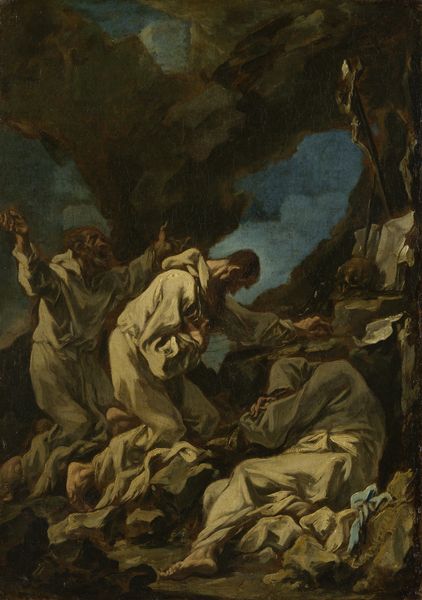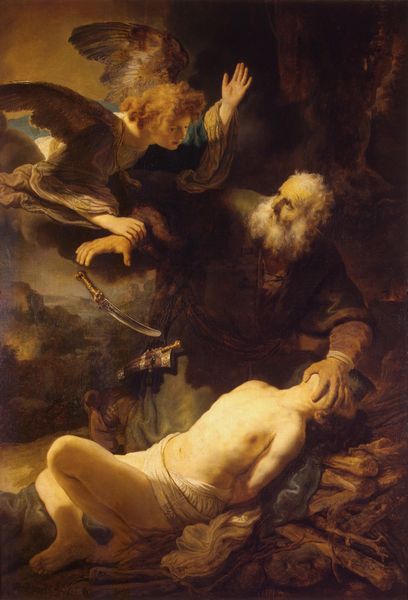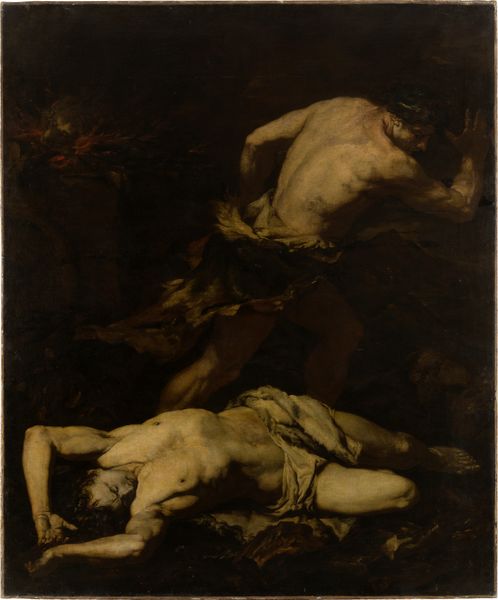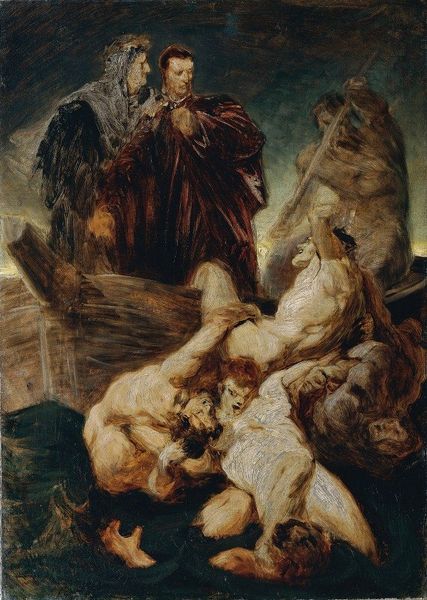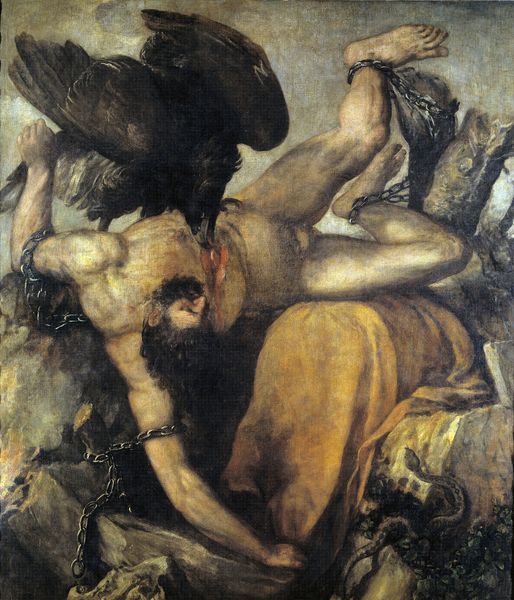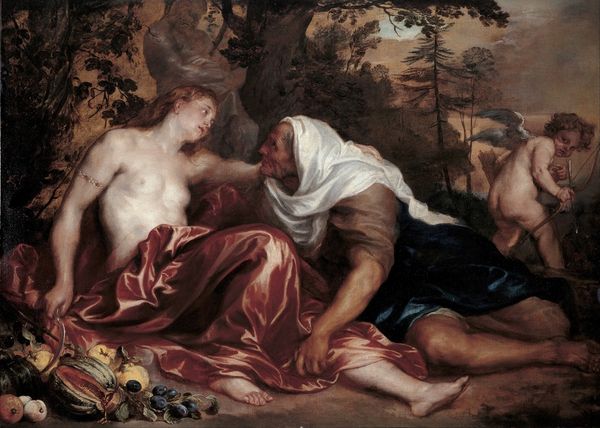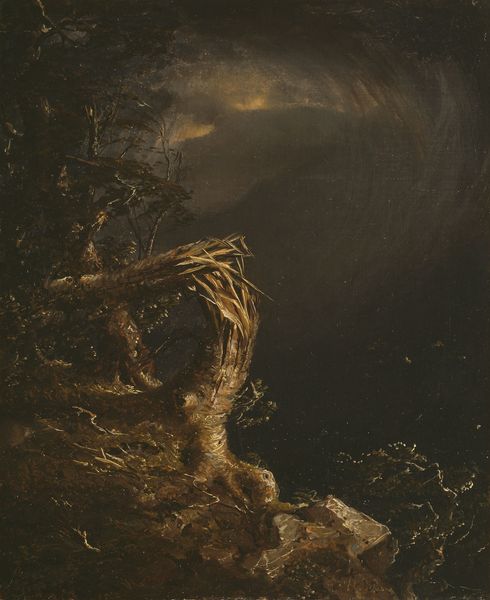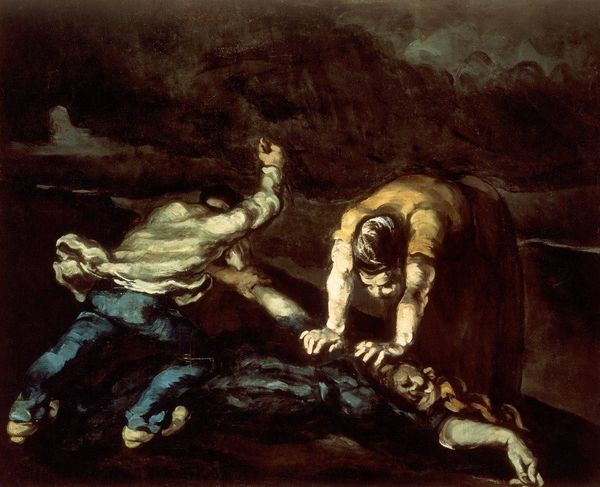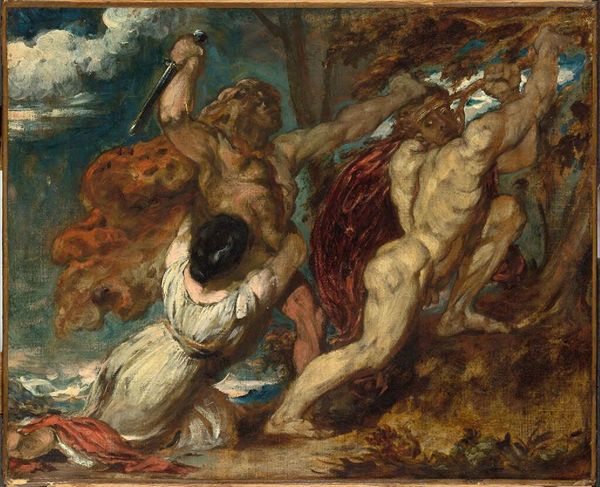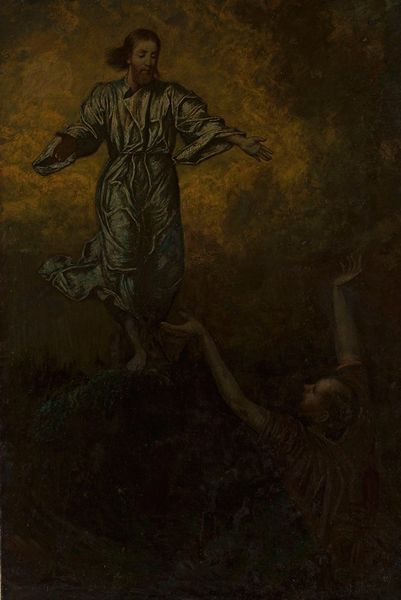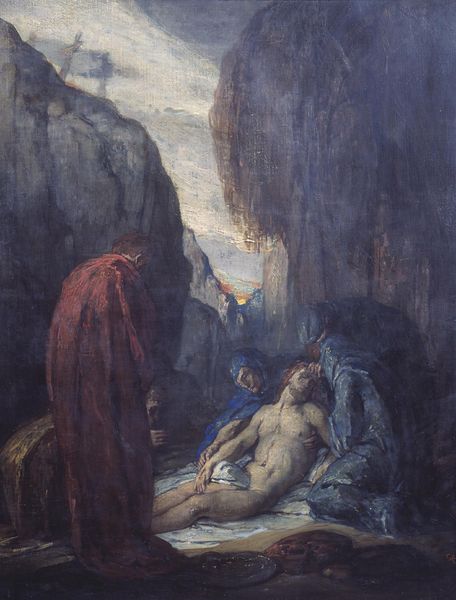
oil-paint
#
allegory
#
baroque
#
oil-paint
#
landscape
#
figuration
#
oil painting
#
mythology
#
history-painting
Copyright: Public Domain: Artvee
Editor: Here we have Salvator Rosa’s oil painting, "The Dream of Aeneas," created sometime between 1660 and 1665. The atmosphere feels heavy, almost ominous. A sleeping, armored figure rests at the bottom, while above him looms another figure entwined with greenery. How do you interpret this work? Curator: Rosa conjures potent symbolic links here. The verdant, prophetic figure immediately suggests a connection to nature, perhaps a river god like Tiberinus, foretelling Aeneas' destiny in Italy. Notice the gesture - it’s not just pointing, it’s a command, a revelation. Do you sense that duality? Editor: Definitely. There’s a contrast between the stillness of Aeneas and the urgent energy of the figure above him. The greenery feels almost suffocating, too, pressing down. Curator: Consider that the leafy figure embodies the weight of history and destiny, a heavy burden passed down. Think of the cultural memory Virgil invoked, shaping Roman identity. What does Aeneas’s sleep signify in contrast? Editor: Perhaps vulnerability, but also receptiveness to the dream's message. He's literally lying down, open to suggestion. Curator: Precisely. Sleep allows for a direct encounter with cultural myth, a descent into the symbolic language of the subconscious. And notice how the dark clouds mirror the emotional weight, prefiguring trials ahead. What lingers with you most strongly? Editor: The tension between the man of action and the power of destiny, or even nature's grand plan. Curator: Exactly! Rosa masterfully captured that eternal human drama - our place within a larger narrative.
Comments
No comments
Be the first to comment and join the conversation on the ultimate creative platform.
